COVID closed KC area Ginger Rogers museum. Now a young, delighted fan buys her house
- Oops!Something went wrong.Please try again later.
Is the best kept secret in Independence that Hollywood icon Ginger Rogers was born there in a two-bedroom bungalow?
For what seemed like a fleeting moment, a museum in that house proudly promoted that Tinseltown tie. But it shut down in 2020, and the house reverted to a private residence.
The Craftsman-style house on West Moore Street has been sold twice since then, both times to devoted Ginger Rogers fans. The last sale was finalized last week.
Now, it has found its way into the hands of a young, first-time homebuyer who is unlikely to stay quiet about her new home’s historic significance because she is related to the Oscar-winning actress, at least according to lore passed down in her family.
“I had no idea the house was for sale until it popped up like two days after it was on the market,” said Christina Vogler, a 25-year-old choir teacher at Maple Park Middle School and Winnetonka High School in the North Kansas City school district.
“I thought, that’s such a cute house, and as I scrolled through and read about it I was like, ‘oh my goodness, this is the Ginger Rogers house!’”
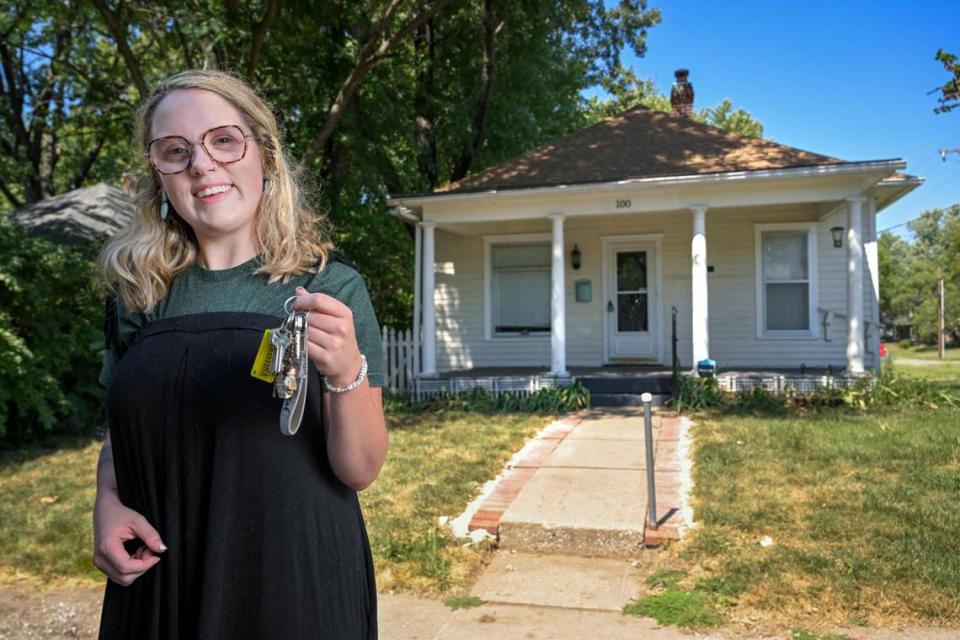
That’s the enthusiasm longtime Independence resident and Rogers devotee Marge Padgitt hoped to elicit from the public when she bought the house in 2016, renovated it and turned it into a museum displaying numerous bits of memorabilia.
Rogers, who won an Academy Award for the 1940 drama “Kitty Foyle,” was best known for dancing with another Midwesterner, Omaha native Fred Astaire, in a string of hit Hollywood musicals, including “Swing Time” and “Top Hat.”
Fred and Ginger. Incomparable dance partners.
But Padgitt’s Ginger House Museum — Birthplace of Ginger Rogers, was short-lived, scuttled mostly by the pandemic, Padgitt told The Star.
“It was a disaster,” she said. “We did a huge renovation and then when COVID hit … we had to close.”
Padgitt sold the house to a fellow Ginger Rogers fan in Kansas City, who rented it to her son until changes in her personal life forced her to sell it, too.
Vogler closed on the house last week.
“I’m already so excited,” Vogler told The Star. “I’m buying the Ginger Rogers house!”
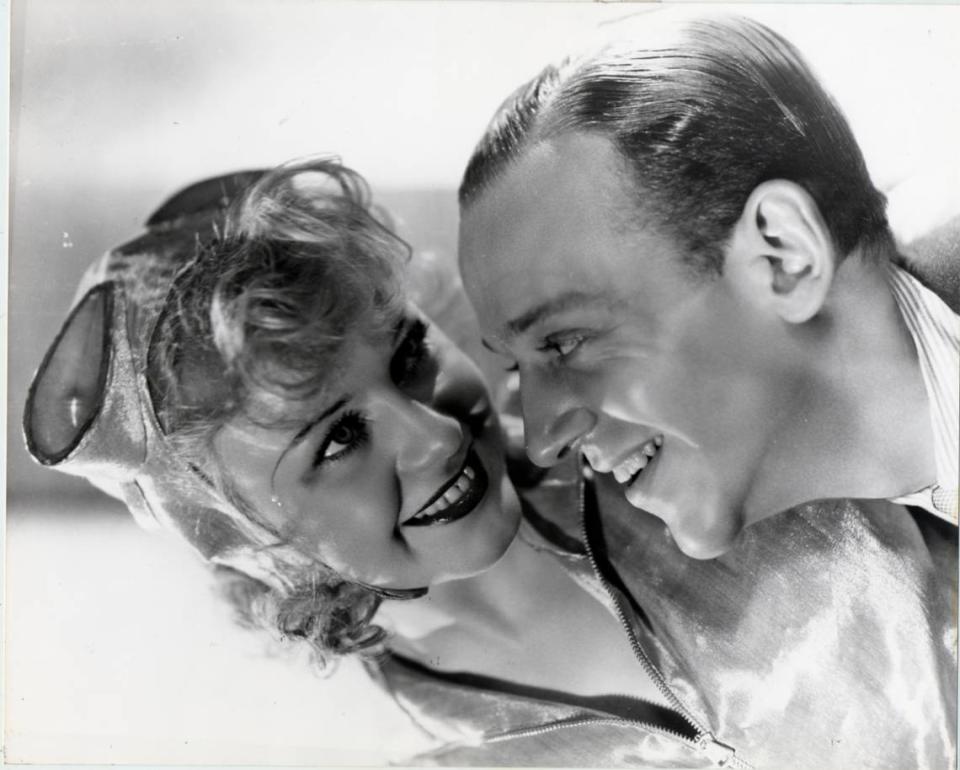
The house where Ginger was born
Vogler, a fan of retro furnishings, loved the built-in china cabinet in the dining room. The home is full of what Realtor.com described as “fun, nostalgic details” — a built-in coffee grinder and tin ceiling in the kitchen and a penny-tile floor and beadboard walls in the half-bath.
The last time Rogers herself set foot in the house was July 16, 1994, for a celebration of her 83rd birthday. She died the following year.
She was born in the front room of the house on July 16, 1911. Her mother and strongest influence, Lela Owens-Rogers, was a force of her own — newspaper reporter, scriptwriter, movie producer.
Mama Rogers grabbed a spotlight for her beautiful baby early on, hiring out her 18-month-old daughter as a model for newspaper ads. By age 2, the future Hollywood hoofer was taking dance classes in Lee’s Summit.
They lived just a few years in the house, which was built in 1906.
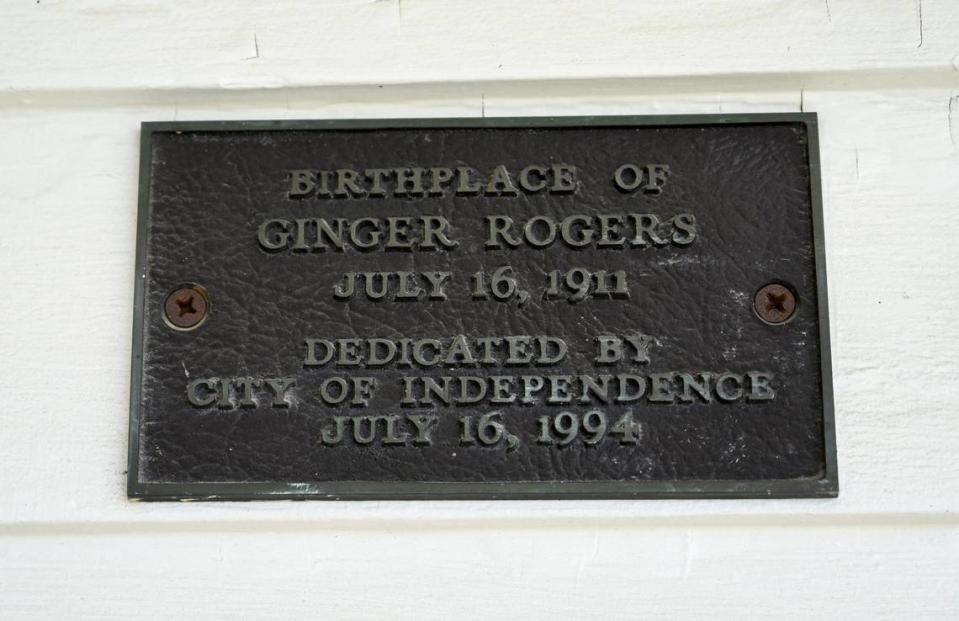
Padgitt’s connection to it began in early 2016 when she began looking for a house to buy and rehab as part of her real estate investment business, Three Trails Cottages.
Her daughter, the company’s finance manager at the time, saw that the Rogers house was for sale and encouraged her mother to buy it.
Padgitt’s general contractor husband, Gene Padgitt, did extensive renovations on the 1,100-square-foot, two-bedroom, 1.5-bath house. Foundation repair. New floors. New plumbing. Fresh paint indoors. The list goes on.
Prepping for the museum, Padgitt began buying and accepting donations of Ginger Rogers memorabilia — gowns, dance shoes, theater programs, movie posters, news articles and paintings created by the actress, an accomplished artist.
COVID: The last straw
While dancers and old-movie buffs might know of Ginger Rogers, “in the community in general, I talk to people who are 50 and who don’t know who she was,” said Padgitt.
When she named the museum, Padgitt said, she did not know she needed permission to use Rogers’ name. Rogers gave that privilege to her church.
“Ginger Rogers left her intellectual property and publicity rights to The First Church of Christ, Scientist,” a church spokeswoman told The Star in a statement.
“The Church manages requests for the use of her name and image through CMG Worldwide, a respected rights clearance agency specializing in protecting the publicity rights of noted celebrities.
“In striving to be faithful to her wishes, the Church works with CMG in an effort to ensure that licensed uses of Ms. Rogers’ name and image are appropriate and in line with standards that she provided.”
Padgitt chose not to sign a contract with the church and instead changed the name to Owens-Rogers Museum to avoid possible legal blowback.
And then, Padgitt said, “COVID was the last straw.” The pandemic shut the world down just as the museum was getting going.
Soon, tenants living in her rental properties began missing payments. Her family’s income took a hit, and the only choice she had was to close the museum and sell the house, she said. “It was very tough,” she said.
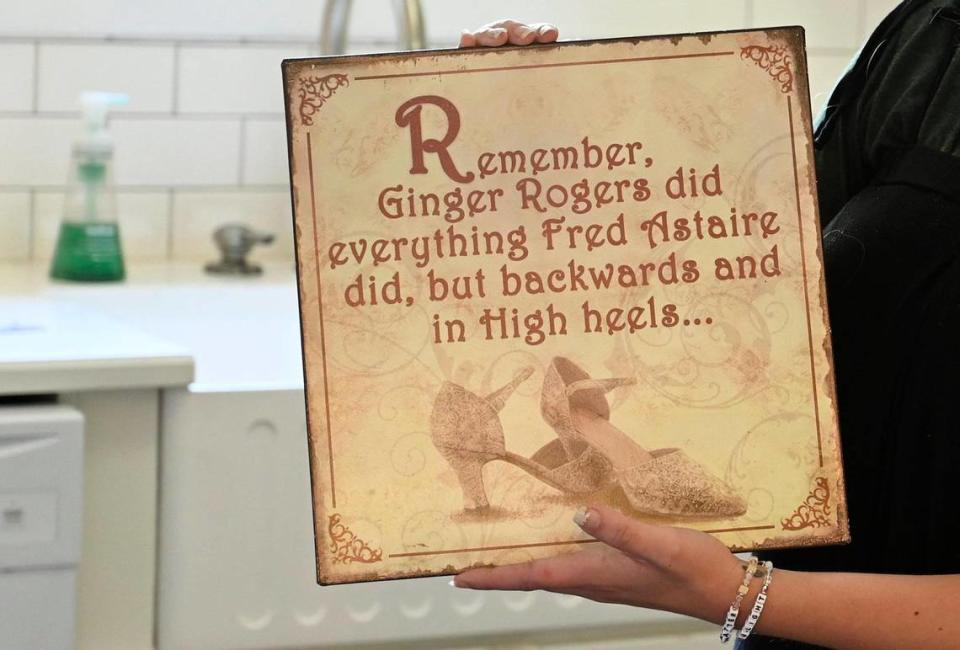
She donated some of Rogers’ wardrobe and kept the rest of the items that she now uses in a mobile show.
”I have 90% of what was in there, in the museum. Now I do a visiting exhibit, so I’ll come visit a group and set up a nice exhibit and do a talk” about Rogers. (See owensrogersmuseum.com.)
She helped form a board of directors working to create a Jackson County museum dedicated to famous Missourians, from outlaw Jesse James to actor Ed Asner.
They haven’t had any luck yet finding a building to house it, she said. And donations are trickling in.
The state of the Ginger Rogers story in Independence today?
“Other than the fact that I’m available to do this exhibit, it’s at a stalemate unless somebody purchases the home and turns it back into a museum,” Padgitt said. “That’s always a possibility. That would be the ideal thing, in my opinion.”
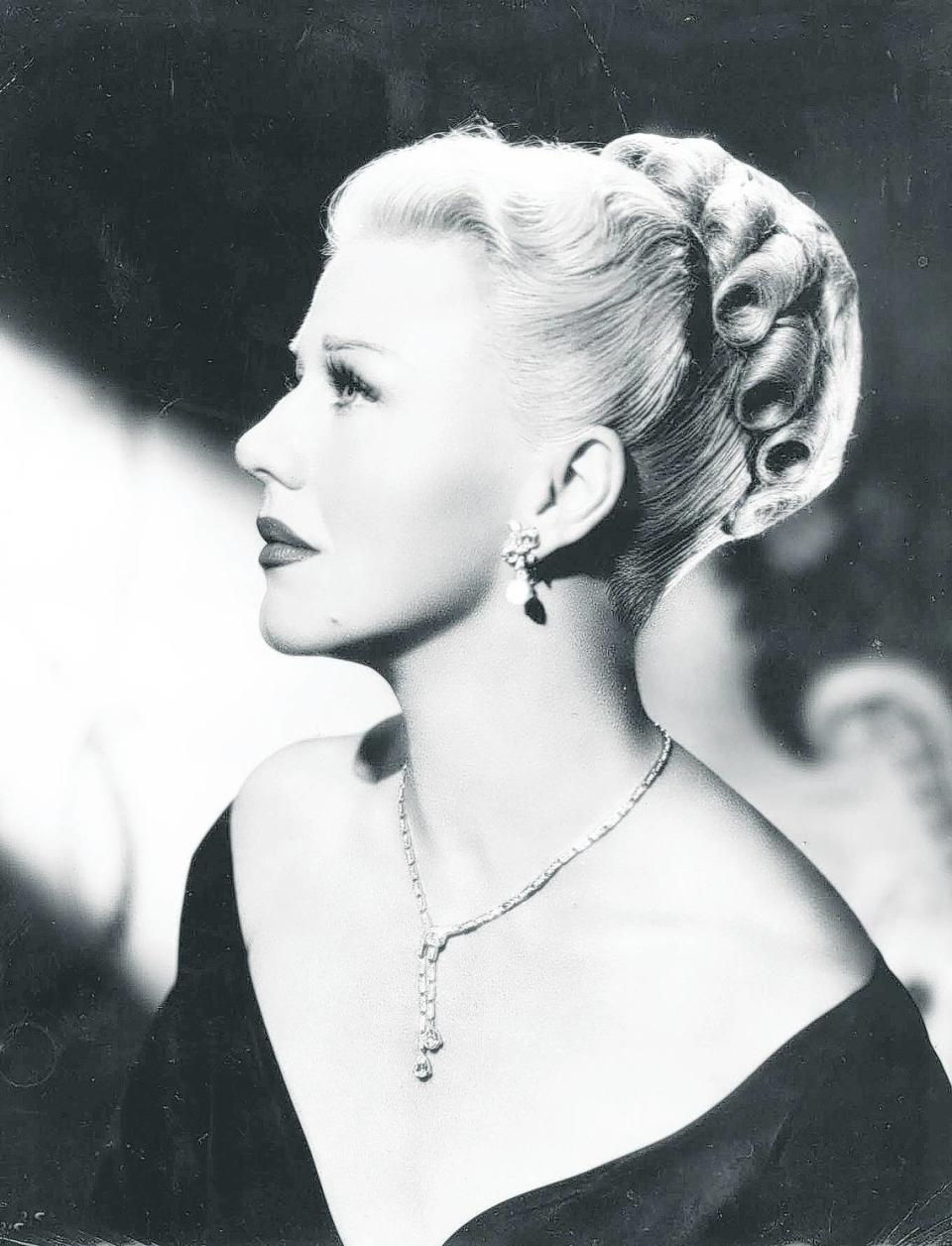
‘The Ginger House’
Padgitt was thrilled to sell the house to someone who loves Ginger Rogers, too.
During the pandemic, Kenyon Anderson’s grown son needed a place to live with two dogs that landlords didn’t want to have around, one a Lab/pit bull mix.
“So my husband and I had the idea, well, let’s buy a house and he can rent it back from us,” Anderson said. “We were looking all over, all over. And I think it may have been my husband that found the house on Zillow. The Ginger House, as I affectionately call her.”
The house all but screamed “buy me.”
Anderson, who minored in dance at Avila University, of course knew who Ginger Rogers was. “And I have a real affinity for that period of the ‘30s, ‘40s, ‘50s,” she said. “I just love, love, love that time period.
“So we went and looked at it, and I just fell in love with it. I loved the idea of owning a little piece of history.”
Having watched “all the Gingers Rogers movies growing up,” Anderson felt nostalgic walking through the house, envisioning a young Ginger living there. “I just feel like, this sounds weird, I felt her presence there,” she said.
She wrote a letter to Padgitt to go along with their offer.
“I said I am happy to have her birthday parties, to do all that,” at the house, she said. “And I would have loved to have made it a museum again at some point, because I just think it’s such a piece of history.”
They bought the house and “I went nuts,” Anderson said. “I went on eBay and I bought hundreds of dollars worth of Ginger Rogers photos and books. “
After their son moved in, people still came to the house looking for the museum.
Anderson had every intention of owning the house forever. But life got in the way, namely, a divorce. She couldn’t afford to hang onto it, though Marge Padgitt, who sold her the house, really wanted her to.
“Marge, God love her, she tried to talk me into keeping it and turning it into an Airbnb,” Anderson said. “It was kind of heartbreaking to put it on the market.
“But this is the cool thing.”
She had two offers the very first weekend the house was listed early last month.
One came from a young woman with a musical theater background who said that somewhere on her father’s side, she is apparently related to Ginger Rogers.
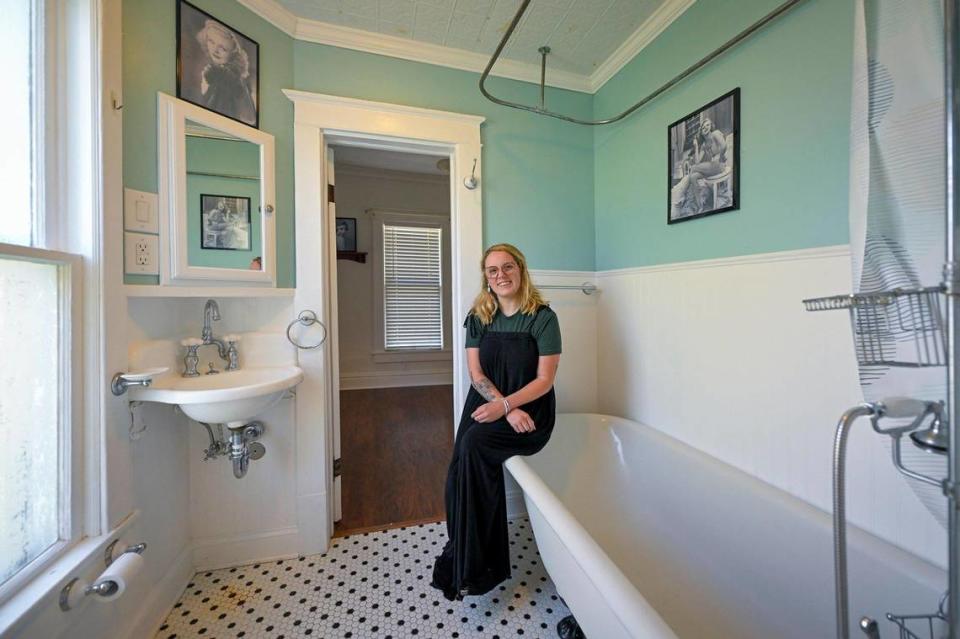
Falling in love with a house
Vogler reacted like Anderson the first time she walked through the house. “I just fell in love with it,” she said.
“I was always told when I was growing up that we were related to Ginger Rogers somehow, not exactly sure how or how true that it is,” Vogler said. “I don’t know much about my dad’s family, a farming family in small-town Kansas.”
She grew up watching old Hollywood movies but finds that people her age have no idea who Ginger Rogers was or have ever seen her movies.
She feels fortunate that she could live at home after graduating college and wait out the pandemic there, paying off student loans and socking away money for a down payment.
She was charmed by the home’s hardwood floors and the restored clawfoot tub. She might add color to the house by painting some of the white walls, but other than that has no plans to change much, respecting the integrity of the house.
“I wanted to put it in good hands. I didn’t want to just sell it,” said Anderson. “I wanted someone who would love it as much as I and Gene and Marge did.
“And the fact that she is related? It’s kind of full circle.”

